These lessons were developed for use in high school global studies and art courses as well as art history and history courses at two-year and four-year colleges and universities. Each lesson is accompanied by a handout, Visual Analysis: Four Steps toward Analyzing Islamic Art.
Lesson Plans

Three Qur'ans
An introduction to the basic design elements of Islamic art: geometric patterns and arabesques.
Lesson Plan
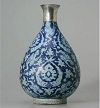
Cultural Exchange between China and the Islamic World
How did Silk Road trade and Mongol territorial expansions lead to the absorption of Chinese motifs into Islamicate art?
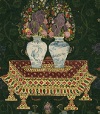
Mughal Paintings
An exploration of art used in service of Mughal imperial legitimization.
Lesson Plan | Handout

Two Carpets
A close examination of an Ottoman Turkish and a Safavid Iranian carpet.
Lesson Plan | Teacher's Sheet on Carpet Terms | Carpet Diagram
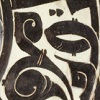
Samanid Bowls
An investigation of sophisticated craft techniques in a medieval Central Asian milieu.

Muhammad's Night Journey
A recreation of Muhammad's miraculous night journey to Jerusalem and then to heaven, where he met earlier prophets and spoke to God.
Lesson Plan | Prophets Worksheet | Abrahamic Faiths Worksheet | Teacher's Answers to Abrahamic Faiths Worksheet
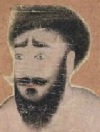
Moses Kills Og (Uj) the Giant
Understanding the incorporation of Jewish and Christian prophets into Islamic narratives of sacred history.
Lesson Plan | Story of Og Worksheet | Prophets Worksheet | Abrahamic Faiths Worksheet | Teacher's Answers to Abrahamic Faiths Worksheet
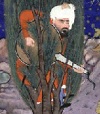
The Musician Barbad Up in a Tree
A study of expressive visual storytelling in a Safavid Shahnameh.
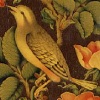
Simurghs and Nightingales
Two lacquer pieces illuminate the relation between sacred and secular in the visual arts, as well as the influence of Renaissance European painting techniques on Safavid and Qajar art.

Calligraphic Emblems
A closer look at three intricate and imaginative samples of Ottoman calligraphy.
We would like to thank the individuals who contributed their expertise to this project:
As project director, Marleen Kassel's background in Asian history, experience in curricular development, and expertise in team management to facilitate the AIW team's efforts. In her capacity as Director of Asian Initiatives at Queens College, she has also organized campus-wide, year-long programs in public history, including Year of China (2010-11), Year of Turkey (2011-12), and Year of India (2012-13).
Martin Amster, the project editor and a curriculum contributor, has worked on developing numerous materials for teaching about Asia in secondary education. He was editor of From Silk to Oil, a curriculum guide on the Silk Roads published by China Institute.
Eve Eisenstadt, a curriculum contributor, comes to us with a strong background in arts and education. As a practicing artist, she earned fine arts degrees at the University of Michigan and Cranbrook Institute, as well as a doctorate in education from Columbia University's Teaching College. Dr. Eisenstadt also completed post-doctoral work in education at Harvard University. She currently works as the arts coordinator for Scarsdale Public Schools.
Sharon Shambourger, a curriculum contributor, is an instructor at the Life Sciences Secondary School in New York City. She has also worked in curricular development at the China Insitute.
Kristina Richardson, the project's academic authority and webmaster, is an assistant professor of Islamic history at Queens College. She is the author of Difference and Disability in the Medieval Islamic World: Blighted Bodies (Edinburgh University Press, 2012).



